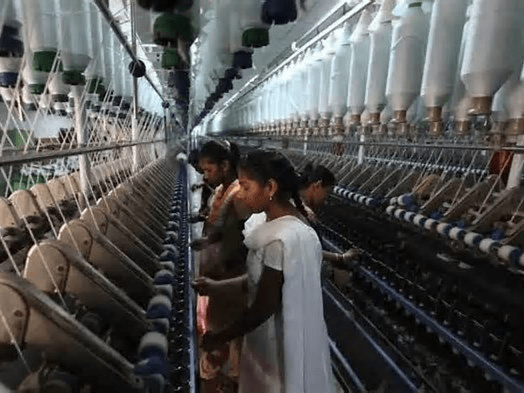Indian Express Editorial Analysis
24 February 2025
What’s ailing India’s textile industry and govt’s attempts to improve competitiveness
(Source – Indian Express, Section – The Ideas Page – Page No. – 13)
Topic : GS3- Indian Economy and issues relating to planning, mobilization, of resources, growth, development and employment
Context
India’s textile industry, one of the country’s largest employers and a key contributor to exports, is facing multiple challenges. Global competition, high input costs, outdated technology, and policy bottlenecks have slowed its growth. The government has introduced several initiatives to improve competitiveness, but structural inefficiencies persist.

Introduction
The textile sector has historically been the backbone of India’s industrial growth. Contributing nearly 2% of GDP and employing over 45 million people, the industry plays a crucial role in economic development. However, stagnating exports, competition from Bangladesh and Vietnam, and rising production costs have weakened its global position. Despite government interventions like Production Linked Incentive (PLI) schemes, PM MITRA parks, and duty exemptions, the sector is struggling to regain its momentum.
Challenges Facing India’s Textile Industry
1. Declining Global Competitiveness
- Higher input costs: Raw material costs, including cotton and synthetic fibers, have surged.
- Power tariffs: India has higher energy costs than Bangladesh and Vietnam, making production expensive.
- Logistics inefficiencies: High transportation costs and port delays impact export timelines.
2. Trade & Policy Barriers
- Free Trade Agreement (FTA) limitations: India lacks FTAs with key textile importers like the EU, giving competitors an edge.
- Inverted duty structure: High import duties on raw materials but lower tariffs on finished goods impact profitability.
3. Outdated Manufacturing & Low Productivity
- Lack of automation: Most small and medium enterprises (SMEs) in the sector lack modern machinery, reducing efficiency.
- Skilled labor shortage: Despite a large workforce, skill gaps in high-end textile production persist.
A Global Perspective: How Other Nations Overtook India
| Country | Key Strategies | Impact |
|---|---|---|
| Bangladesh | Lower labor costs, preferential trade agreements | Surpassed India in apparel exports |
| Vietnam | Strong FTA network, modern factories, FDI-driven growth | Increased market share in US & EU |
| China | Large-scale production, automation, government subsidies | Retains dominance in global textiles |
Government’s Efforts to Revive the Sector
✅ Production Linked Incentive (PLI) Scheme: Offers incentives to boost domestic textile manufacturing, especially in synthetic fibers and technical textiles.
✅ PM MITRA Textile Parks: Mega textile hubs to improve economies of scale and streamline production.
✅ Duty-Free Import of Cotton: To counter high raw material prices and improve cost competitiveness.
✅ FTA Negotiations: India is negotiating trade deals with the UK, EU, and Australia to secure better market access for textiles.
Economic & Political Implications
1. Employment Impact
- The textile sector is a major employment generator, particularly for women. A slowdown in growth directly affects job creation.
2. Global Trade Standing
- India risks losing its position in textile exports if competitors continue to outperform in cost efficiency and trade agreements.
3. MSME Struggles
- Small textile firms, which constitute nearly 80% of the sector, lack access to capital for modernization, keeping them trapped in low productivity cycles.
Way Forward: Reviving India’s Textile Sector
✔ Boosting FTAs & Trade Agreements: Expediting trade negotiations with the EU and UK to secure tariff reductions.
✔ Encouraging Automation & Innovation: Providing subsidies for technology upgrades to improve efficiency.
✔ Reducing Raw Material Costs: Easing import duties on fibers and expanding domestic cotton production.
✔ Strengthening MSMEs: Offering credit support and infrastructure assistance for small textile units.
Conclusion
India’s textile industry stands at a crossroads. While government policies aim to improve competitiveness, structural bottlenecks hinder its growth. Without FTAs, technology upgrades, and cost efficiency improvements, India risks losing its textile dominance to Bangladesh and Vietnam. A sustainable, innovation-driven approach is the key to reviving India’s textile sector and ensuring long-term global competitiveness.


